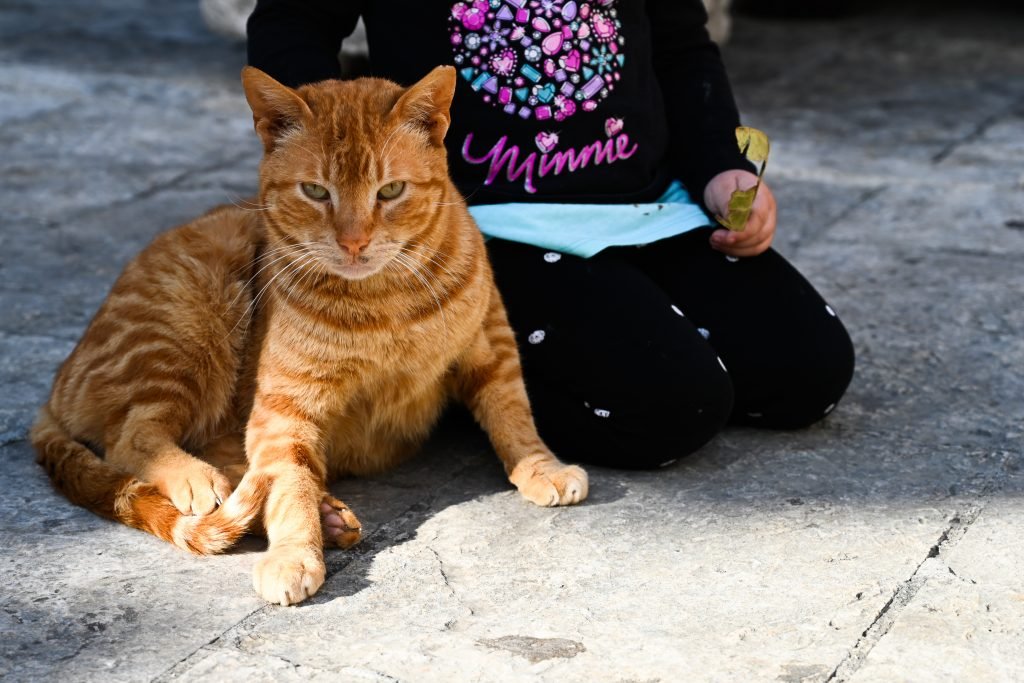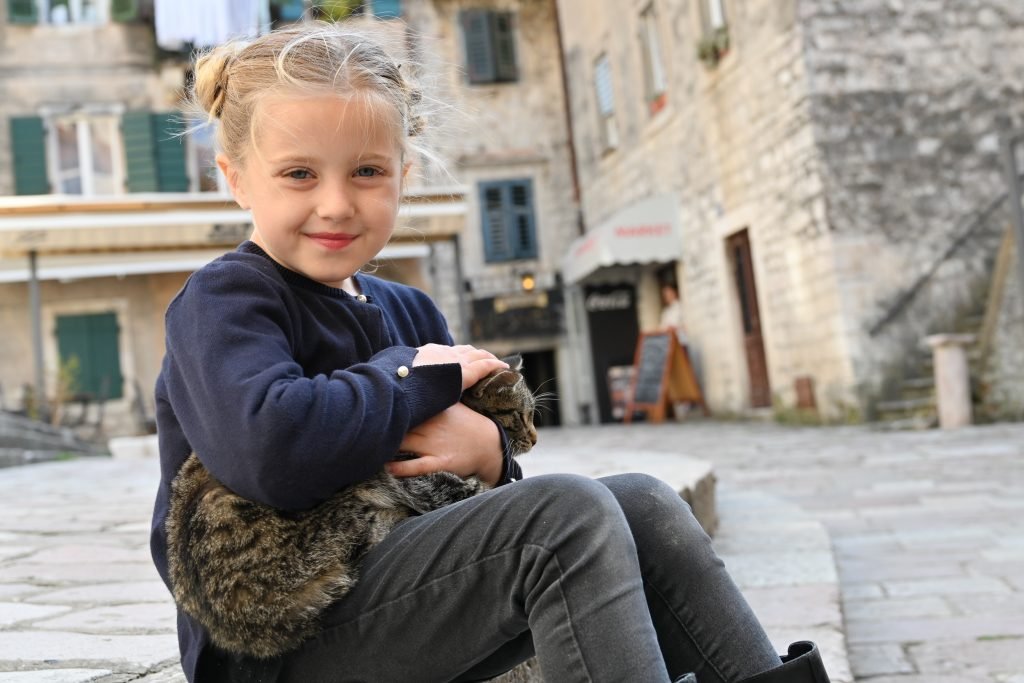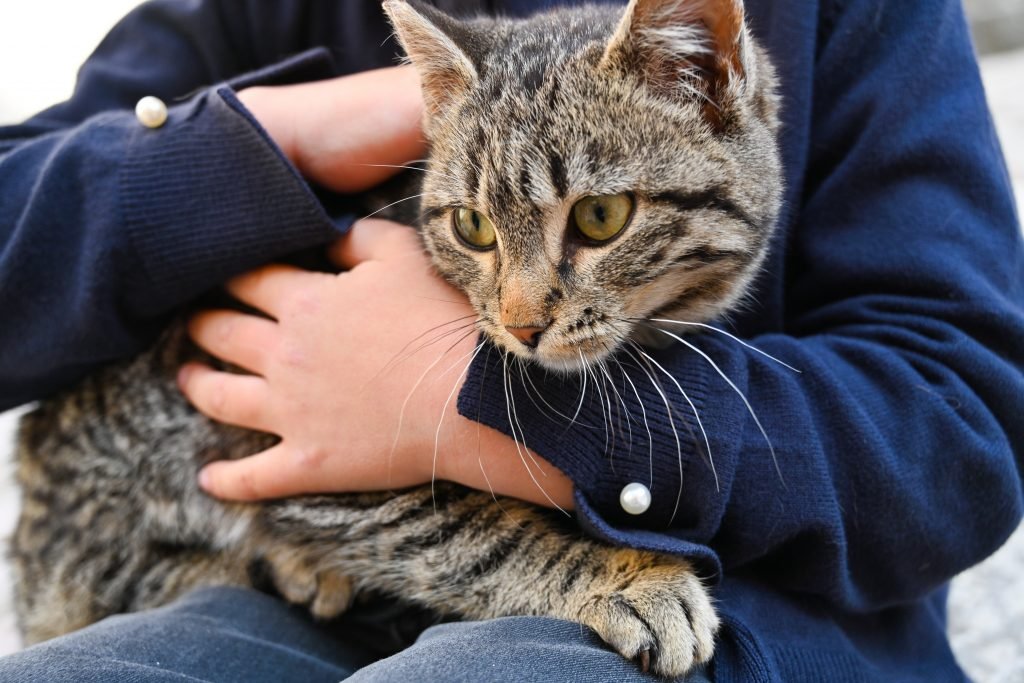by Janelle Schroy
The day is warm, and the breeze gently brushes against our faces as the sun bathes the piazza in a gentle morning glow.
We are in Kotar, Montenegro, a place I couldn’t even find on a map if you’d asked me a month ago. That’s the thing about traveling full time though. Some approach the traveling lifestyle with a strict itinerary, pre-planned down to every last detail, with flights and hotels all neatly arranged on a spreadsheet. But the way we see it, what’s the fun in that?
It’s safe to say we are more than pleased to have found ourselves in a tiny little country of Montenegro. The country jaw-dropping beautiful. Near the center of the country is a fjord-like bay called the Bay of Kotor, and there are three special little towns here: Budva, Tivat and Kotor.


CAT LOVER HEAVEN
Kotar is an ancient walled town, a UNESCO World Heritage Site, and one of the best-preserved medieval towns in the Adriatic Sea. It is very much like Venice in design, but without the canals. The buildings are low and narrow, and tiny cobblestone streets give way to large, open piazzas. And there are gracious Romanesque and Greek Orthodox churches nestled throughout the small town, each holding myriad art pieces. Add to that the centuries of fascinating history, and you’ve got a storybook setting.
Arguably, Kotar could be Europe’s most idyllic village.
Devyn, our five-year-old, is an animal person. Big, small, dangerous, loud, soft, quiet – she loves them all. As she travels the world, she learns everything she can about the most locally loved animals. In our recent month in Croatia, she loved gathering the stories about Dalmatian dogs, who originate in the Dalmatia region of Croatia.


STORYTIME
But here in Kotar, Devyn is in cat-lover heaven. While I drink in the charm of this little town, Devyn just sees the cats, hundreds of them spread out around the town. They seem to grace the town like decorations. They are lounging in the doorways, perched in the windowsills, and playing along the cobblestones streets.
Devyn spots a gorgeous orange-colored cat sitting in a sun-dappled doorway, purring contentedly while being stroked by the shopkeeper. Devyn asks politely if she can pet the cat and soon we are all are invited into the shop, where we become steeped in conversation with the shopkeeper, who hands out lovely chocolates and treats us to stories about the beloved kitties of Kotar.
She tells us that, although the cats of Kotar seem to be homeless, none of them really are.
The whole town looks after them as a community, doting on them, feeding them, brushing them, and taking them for veterinary care when needed. It’s as if the village has all signed a mutual agreement to preserve and protect the many, many cats.
“Why do the townspeople do this?” Devyn asks.
The lady smiles. “Because they saved our city,” she explains. She goes on to share the story of how the cats of Kotar literally saved the city from destruction.
THE CAT’S MEOW
The kind lady shares how cats were originally brought to Kotor by the many ships that came to the local port from all over the world. Like Venice, Kotor had a problem with rampant mice, rats, and snakes. Thankfully, the imported cats were very happy to take care of that little problem, and soon the city became a thriving trading port.
Because of this, cats started to become a symbol of good luck. The Kotorians even chose to use the symbol of a miniature version of the Venetian Lion, quite fitting for this feline-loving community.
THE EARTHQUAKE
But in 1979, the unthinkable happened – an earthquake of extreme proportions, the most devastating ever in the history of Montenegro (then part of Yugoslavia). The seismologists had predicted that it might be a big earthquake, but no one knew just HOW big.
Except for the cats.
A few days before the earthquake struck, hundreds of cats in the city started making a haunting crying sound, almost in unison.
It seemed they could feel the terrestrial groanings and that mass destruction would soon be upon them and were crying out. The people of Kotor had heard they were to brace themselves for a coming quake, and as the sound of the cats cries continued to escalate, the people started to worry. They self-evacuated the city in the nick of time, bringing many of the cats with them.
In the coming days, 450 villages in the area came crumbling to the ground, and with them, many parts of the city of Kotor. It took ten years of reconstruction before the people could move back into the city. Ten years of being displaced while their town was rebuilt. Ten years of thanking the cats for saving their lives. Ten years of remembering that eery sound of the cat’s meow, warning the town to get to safety.

CAT HAVEN FOREVER
“Wow. I guess that’s why you all love your cats so much!” Devyn says as the lady finishes her moving story. Devyn’s eyes are full of wonder at the little orange cat who crawled up on her lap for attention.
“Yes. It wasn’t so long ago, you know,” the shopkeeper responds. “It’s not a legend. This was recent history, and it’s important to us that we all look after our cats. You won’t find more loved, more cared for, more well-fed cats anywhere in the world. When you come to Kotor, you come to a cat sanctuary. They are part of us, part of our community. We are all responsible for them.”
As we continue on our wandering around the old town, my children nod in respect to each cat we see, stopping to speak to each one, considering the story they just heard.
It’s stories like this that make traveling so much fun, especially for kids.
As we pause for lunch, the girls take time to sketch a cat into their travel journals, giving each a name, an identity. As the girls sketch, another kitten meows behind us and gently nuzzles its way into Devyn’s lap. They always pick her, as if they can feel her natural love for animals. She stops drawing to stroke it, smiling. There is no pressure to make it anywhere else today. She’s in Kindergarten, and today, this is part of school.
This is worldschooling – the intentional act of seeing the world as our classroom, allowing travel and experiences to guide our learning, while leaning into all that it offers. History, geography, science, and art – all wrapped up in one gorgeous story.
Thanks, Kotor, and all your gorgeous kitties. We won’t forget you.
AND NOW FOR THE BIG CATS
Like cats? Check out our video below from Seattle, where Devyn spent a day learning about Bengal Tigers and helping the zookeeper behind the scenes. Please subscribe to Adventure Family Journal’s YouTube channel and follow our journey.
